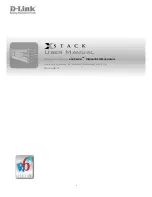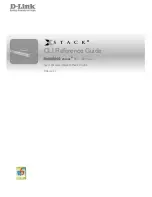
Panic Button
User’s Manual
Introduction
The Panic Button is a wireless switch designed to control the panic status
of other associated devices through the Z-Wave controller. After receiving
the signals emitted by the Panic Button, the Z-Wave controller can then
give commands or operate according to its own settings. When the Panic
Button is armed, the red LED will illuminate and the built-in buzzer will
sound at the same time. Its great compatibility with Z-Wave products
makes it suitable for Z-Wave smart home gateway.
The Panic Button is also a security Z-Wave device and supports the Over-
The-Air (OTA) feature for the product’s firmware upgrade. If you want it to
be a security device that use secure/encrypted message to communicate in
a Z-Wave network, then a security enabled Z-Wave controller is needed.
Package Contents
Panic Button
x
1
User
Manual
x
1
3M Double-sided tape
x 1
Screw
x 2
Command Class
Z-Wave Panic Button Command
Class
Supported
COMMAND_CLASS_ZWAVEPLUS_INFO_V2
COMMAND_CLASS_SUPERVISION_V1
COMMAND_CLASS_BATTERY_V1
COMMAND_CLASS_WAKE_UP_V2
COMMAND_CLASS_TRANSPORT_SERVICE_V2
COMMAND_CLASS_SECURITY_V1
COMMAND_CLASS_SECURITY_2_V1
COMMAND_CLASS_VERSION_V3
COMMAND_CLASS_FIRMWARE_UPDATE_MD_V4
COMMAND_CLASS_ASSOCIATION_V2
COMMAND_CLASS_ASSOCIATION_GRP_INFO_V1
COMMAND_CLASS_MULTI_CHANNEL_ASSOCIATION_V3
COMMAND_CLASS_MANUFACTURER_SPECIFIC_V2
COMMAND_CLASS_DEVICE_RESET_LOCALLY_V1
COMMAND_CLASS_POWERLEVEL_V1
COMMAND_CLASS_NOTIFICATION_V8
COMMAND_CLASS_CONFIGURATION_V1
Security
COMMAND_CLASS_ASSOCIATION_V2
COMMAND_CLASS_MULTI_CHANNEL_ASSOCIATION_V3
COMMAND_CLASS_ASSOCIATION_GRP_INFO_V1
COMMAND_CLASS_MANUFACTURER_SPECIFIC_V2
COMMAND_CLASS_DEVICE_RESET_LOCALLY_V1
COMMAND_CLASS_POWERLEVEL_V1
COMMAND_CLASS_NOTIFICATION_V8
COMMAND_CLASS_CONFIGURATION_V1
COMMAND_CLASS_BATTERY_V1
COMMAND_CLASS_WAKE_UP_V2
COMMAND_CLASS_VERSION_V3
COMMAND_CLASS_SUPERVISION_V1
COMMAND_CLASS_FIRMWARE_UPDATE_MD_V4
Panic Button Device Information
Basic Device Class: ROUTING_SLAVE
Generic Device Class: SENSOR_NOTIFICATION
Specific Device Class: NOTIFICATION_SENSOR
Detailed description of each Command Class
[COMMAND_CLASS_ZWAVEPLUS_INFO]
The Z-Wave Plus Info Get Command is used to get additional information
of the Z-Wave Plus device in question.
[COMMAND_CLASS_SUPERVISION]
The Supervision Command Class allows a sending node to request
application-level delivery confirmation from a receiving node. The delivery
confirmation includes relevant application-level status information in the
confirmation message. The Supervision Command Class MAY be used for
solitary commands such as Set and unsolicited Report commands.
The Supervision Command Class MUST NOT be used for session-like
command flows such as Get←→Report command exchanges or firmware
update.
[COMMAND_CLASS_BATTERY]
The Battery Command Class is used to request and report battery levels for
a given device.
[COMMAND_CLASS_WAKE_UP]
The Wake Up Command Class version 2 enables read back of the Wake Up
Interval capabilities in a node.
The Z-Wave Panic Button wakes up by wake up timer or presses the
physical button once, it will send Wakeup Notification Command to the
node ID that requires to be reported and stay awake for 10 seconds, if no
WAKE_UP_NO_MORE_INFORMATION command is received.
[COMMAND_CLASS_TRANSPORT_SERVICE]
The Transport Service Command Class supports the transfer of datagrams
larger than the Z-Wave frame.
[COMMAND_CLASS_SECURITY]
The Security Command Class create the foundation for secure application
communication between nodes in a Z-Wave network. The security layer
provides confidentiality, authentication and replay attack robustness
through AES-128.
[COMMAND_CLASS_SECURITY_2]
The Security 2 Command Class is a framework for allowing nodes to
communicate securely in a Z-Wave network. The Security 2 Command Class
provides backwards compatibility to nodes implementing the Security 0
Command Class. Security 2 Command Class also defines a new
encapsulation format, new Security Classes and a new KEX Scheme 1, which
together offers a number of advantages over the Security 0 Command Class.
Security 2 Command Class is scalable and allows more KEX Schemes,
Security Classes and encapsulation formats to be introduced in the future
if necessary.
[COMMAND_CLASS_VERSION]
The Version Command Class, version 3 allows supporting nodes to
advertise capabilities related to the Version Command Class and optionally
provide a detailed list of information regarding implementation on the Z-
Wave chip.
[COMMAND_CLASS_FIRMWARE_UPDATE_MD]
[COMMAND_CLASS_ASSOCIATION]
The Association Command Class is used to manage associations to Node ID
destinations. A Node ID destination may be a simple device or the Root
Device of a Multi Channel device.
[COMMAND_CLASS_MULTI_CHANNEL_ASSOCIATION]
The Multi Channel Association Command Class is used to manage
associations to Multi Channel End Point destinations as well as to Node ID
destinations.
[COMMAND_CLASS_ASSOCIATION_GRP_INFO]
The Association Group Information (AGI) Command Class allows a node to
advertise the capabilities of each association group supported by a given
application resource. Controllers and installer tools SHOULD use AGI
information to support controller-assisted button-to-button association
and GUI-based drag-and-drop association in a plug-and-play fashion.
Centralized gateway-based deployments may create a single association
from the lifeline association group to a central management application.
Group
Name
Description
1
Lifeline
Lifeline group, association with 5 nodes.
2
Basic set
ON/OFF group, association with 5 nodes.
When the button is pressed and held for more than 1.5 seconds, a
BASIC_SET command will send On(0xFF) or Off(0x00) to the nodes of
Grouping 2. The Basic Command Class supports Version 2.
[COMMAND_CLASS_MANUFACTURER_SPECIFIC]
Manufacturer Specific Command Class, version 2 adds a set of commands
to communicate unique identification, e.g. the serial number, of the
product. Commands not mentioned here remain unchanged as specified
for Manufacturer Specific Command Class, Version 2.
[COMMAND_CLASS_DEVICE_RESET_LOCALLY]
The Device Reset Locally Command Class is used to notify central
controllers that a Z-Wave device is resetting its network specific
parameters.
[COMMAND_CLASS_POWERLEVEL]
The Powerlevel Command Class defines RF transmit power controlling
Commands useful when installing or testing a network. The Commands
makes it possible for supporting controllers to set/get the RF transmit
power level of a node and test specific links between nodes with a specific
RF transmit power level.
[COMMAND_CLASS_NOTIFICATION]
The Notification Command Class is used to advertise events or states, such
as movement detection, door open/close or system failure. The
Notification Command Class supersedes the Alarm Command Class.
Notification Type
Notification Events
0x07
(Home Security)
0x00
(Previous event clear)
0x08
(Button detected)
[COMMAND_CLASS_CONFIGURATION]
The Configuration Command Class allows product specific configuration
parameters to be changed.
This class is used for setting certain vendor specific configuration variables.
1.
Alarm LED lighting duration
This parameter defines the alarm LED duration when Panic Button is armed.
(1)
The value is set to 1~100: The alarm LED keeps turning on for 1~100
seconds.
(2)
The value is set to 127: The alarm LED keeps turning on until Panic
Button is disarmed.
Parameter
Size
Range
Default value
1
1
1~100, 127
127
2.
Alarm buzzer duration
This parameter defines the alarm buzzer duration when Panic Button is
armed.
(1)
The value is set to 0: Disable alarm buzzer.
(2)
The value is set to 1~100: The alarm buzzer keeps turning on for 1~100
times.
(3)
The value is set to 127: The alarm buzzer keeps turning on until Panic
Button is disarmed.
Parameter
Size
Range
Default value
2
1
0~100, 127
127
Product Overview
Product Installation
Battery Installation
1.
Slide the battery cover on the bottom of the product to separate it from
the main body.
2.
Insert 2 AAA batteries into the battery compartment and make sure
that the positive and negative polarity of the battery is correct.
3.
Slide the battery cover back to the main body.
4.
Lock the 2 screws into the screw holes to ensure that the battery cover
is tightly integrated with the main body.
Note:
The package contents do not contain batteries and must be
purchased by the user.
Panic Button Installation
1.
Place the Panic Button on your desktop.
2.
Using the double-sided tape: first peel one side of the tape and place
the sticky side onto the battery cover of the Panic Button. Then peel the
other side of the tape and attach it onto a proper location on the wall.
Product Operation
Function
Operation
Inclusion
Put the Z-Wave Controller into inclusion mode,
and press the button three times in 1.5 seconds
to include the device.
Exclusion
Put the Z-Wave Controller into exclusion mode,
and press the button three times in 1.5 seconds
to exclude the device.
Reset
1.
Press the button three times in 1.5 seconds
and press and hold the button for more than
10 seconds at the 3rd time.
2.
The device is excluded and restores to factory
default setting.
3.
Then the device will be restored to the
unpaired status.
Note:
Please use this procedure only when the
network primary controller is missing or
otherwise inoperable.
Arm
Press and hold the button more than 1.5 seconds.
Disarm
When Panic Button is armed, press and hold the
button more than 6 seconds, whereas the buzzer
will mute and the LED will be red blinking two
times.
LED Indicator
LED Signal
Status
LED off
1.
Panic Button is not powered.
2.
Panic Button is in standby
mode
.
Red blinking once every 2
seconds for 30 seconds
When Panic Button is powered and
has not been added to the Z-Wave
network.
Solid Red for 5 seconds
When Panic Button is powered and
has been added to the Z-Wave
network.
Red blinking 3 times
1.
Inclusion process success
2.
Exclusion process success
3.
Parameter setting success
Solid Red
Panic Button has been successfully
armed.
Red blinking 2 times
Panic Button has been successfully
disarmed.
Red blinking 6 times
Low battery
Product Specification
Item
Description
Power Supply
DC 3V, AAA battery x 2
RF Protocol
Z-Wave Plus
RF Frequency
EU:868.40MHz
US:908.40 MHz
JP: 922.50 MHz
Data Rate
9.6kbps/40kbps/100kbps
Operation Range
100 feet (About 30M)
LED Indicator
RED
Buzzer
x1
Button
x1 (Inclusion/ Exclusion/ Arm/
Disarm/ Reset)
Waterproof Level
IPX4
Operation Temperature
-10
℃
~ 40
℃
Regulatory Approvals
CE/ FCC/ TELEC / Z-Wave® Plus
V1.1




















